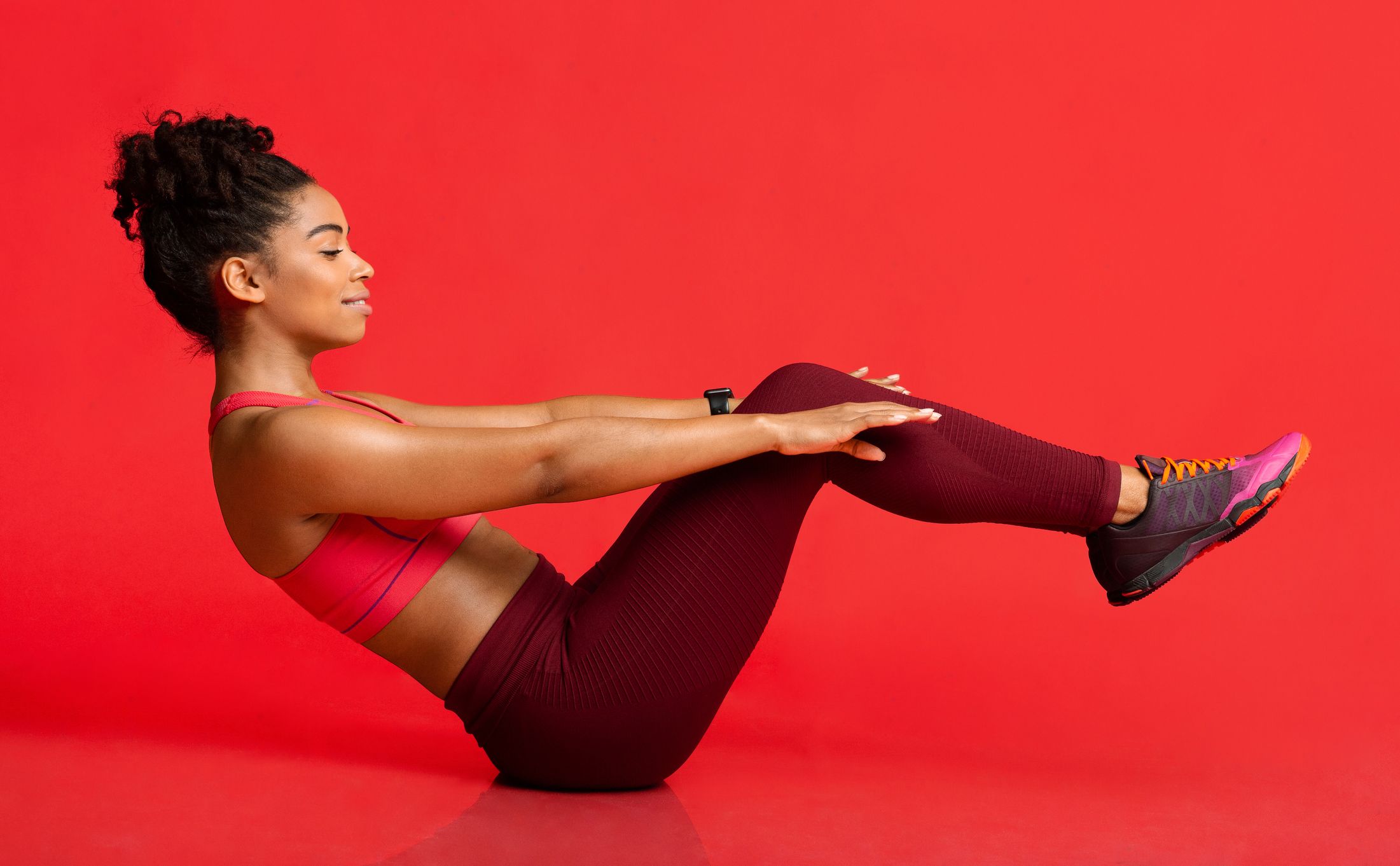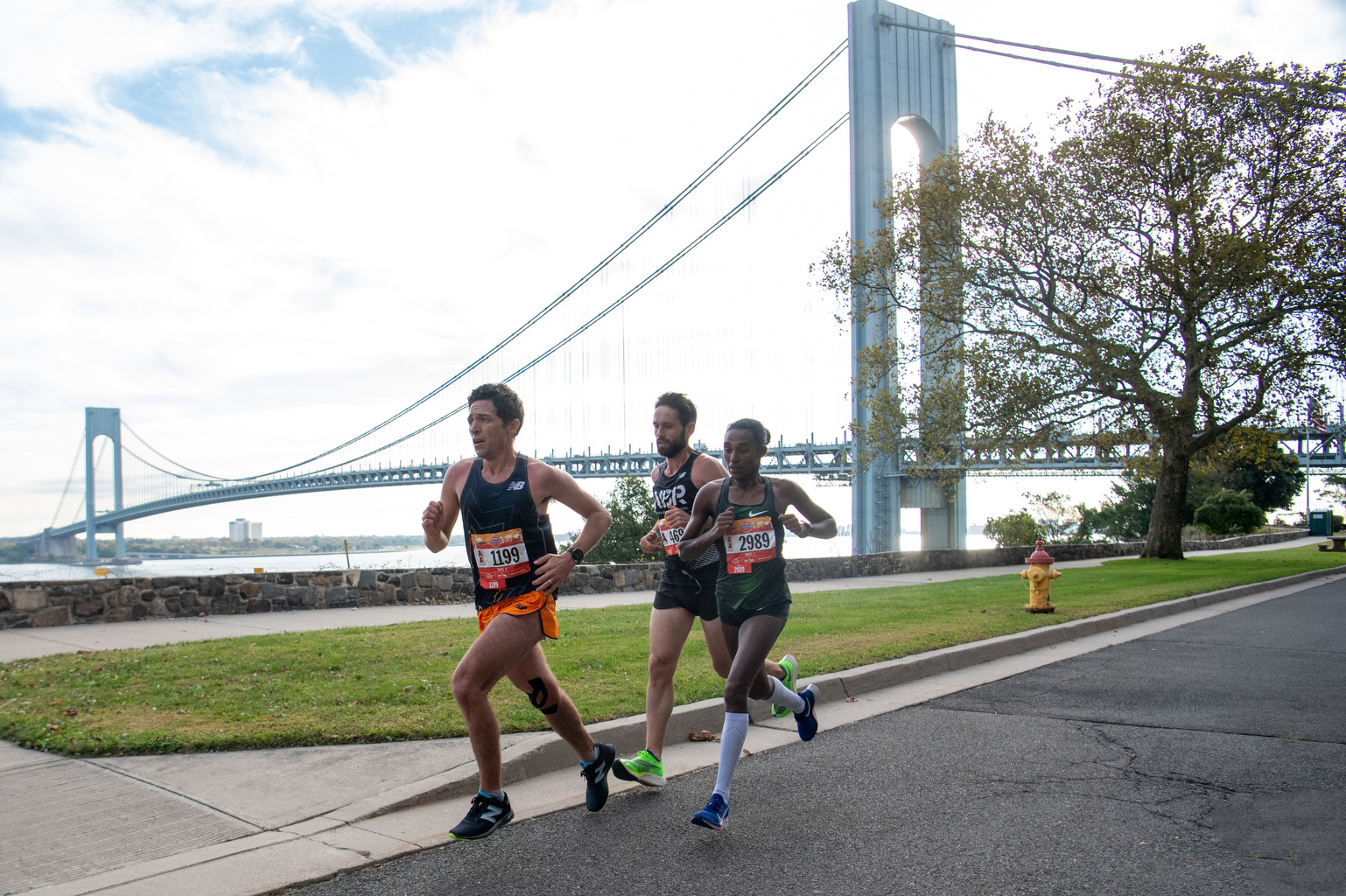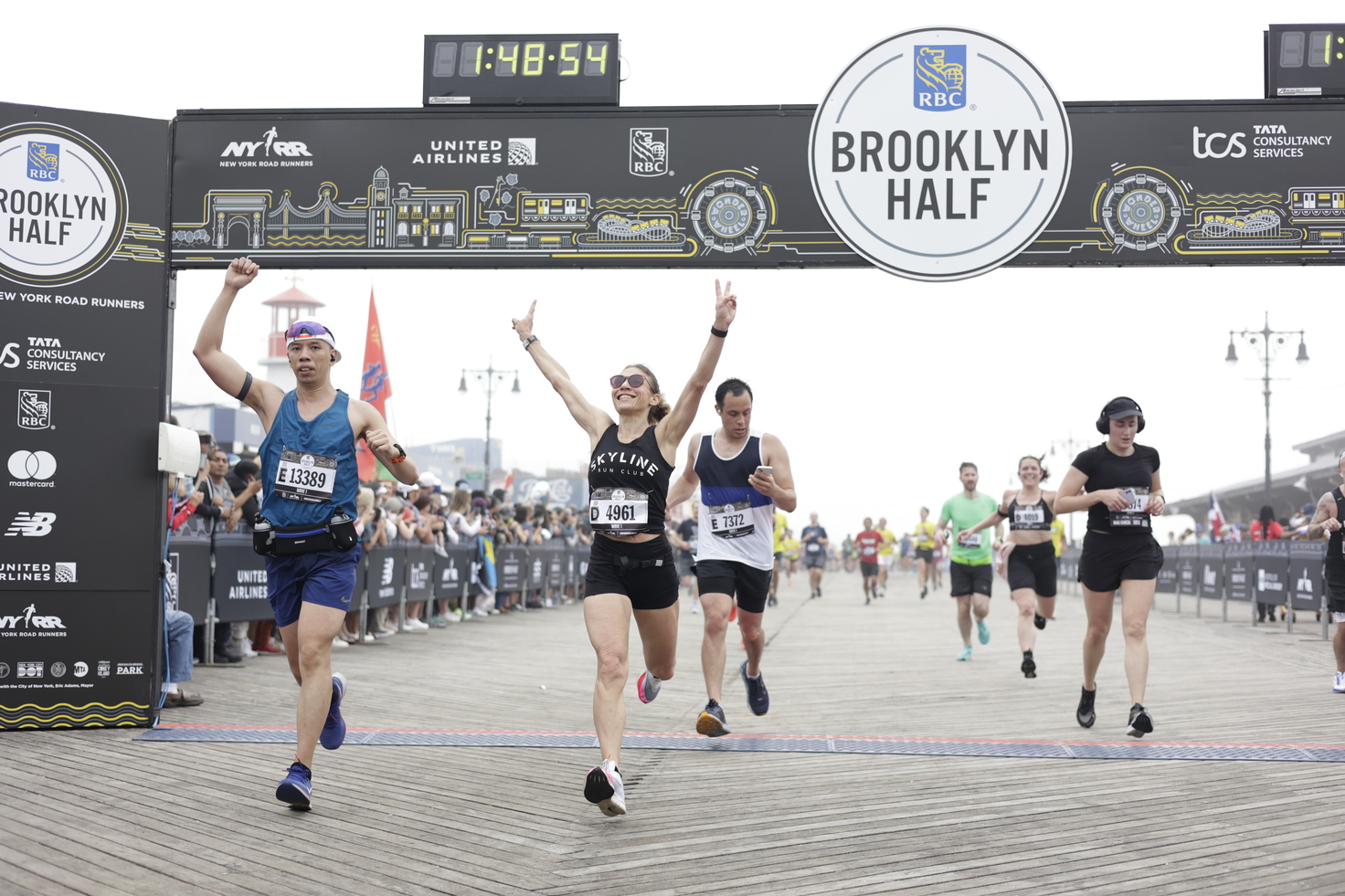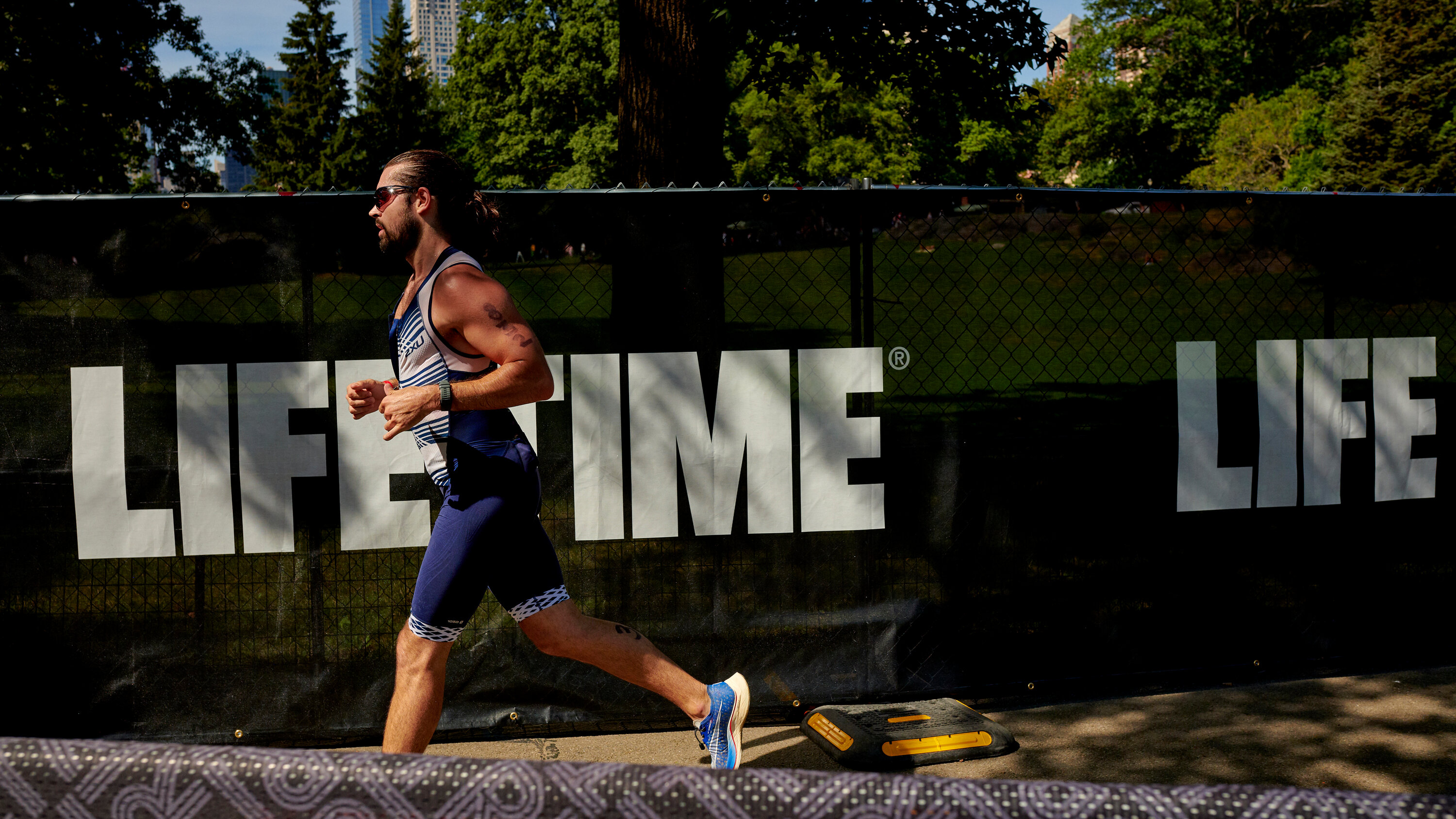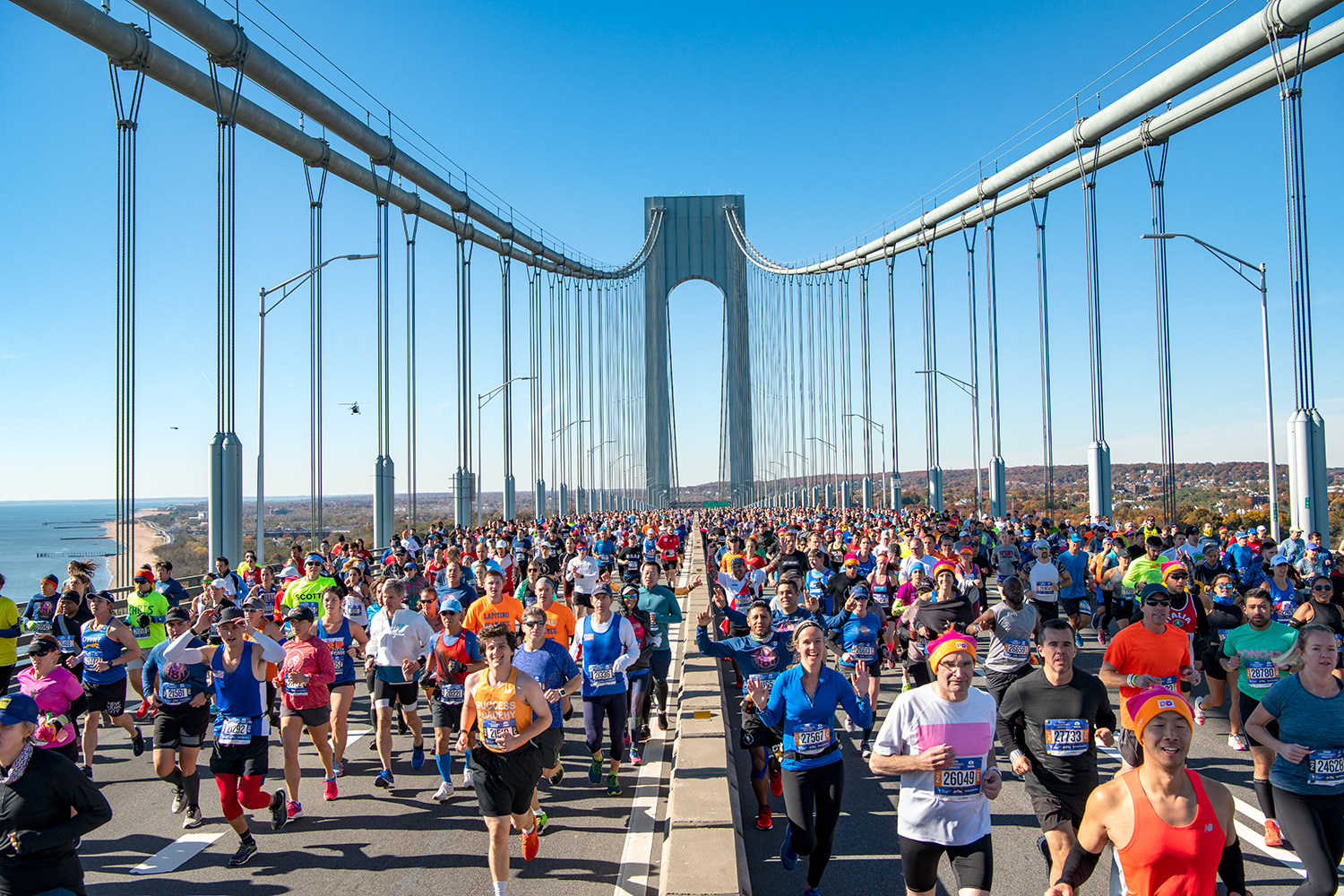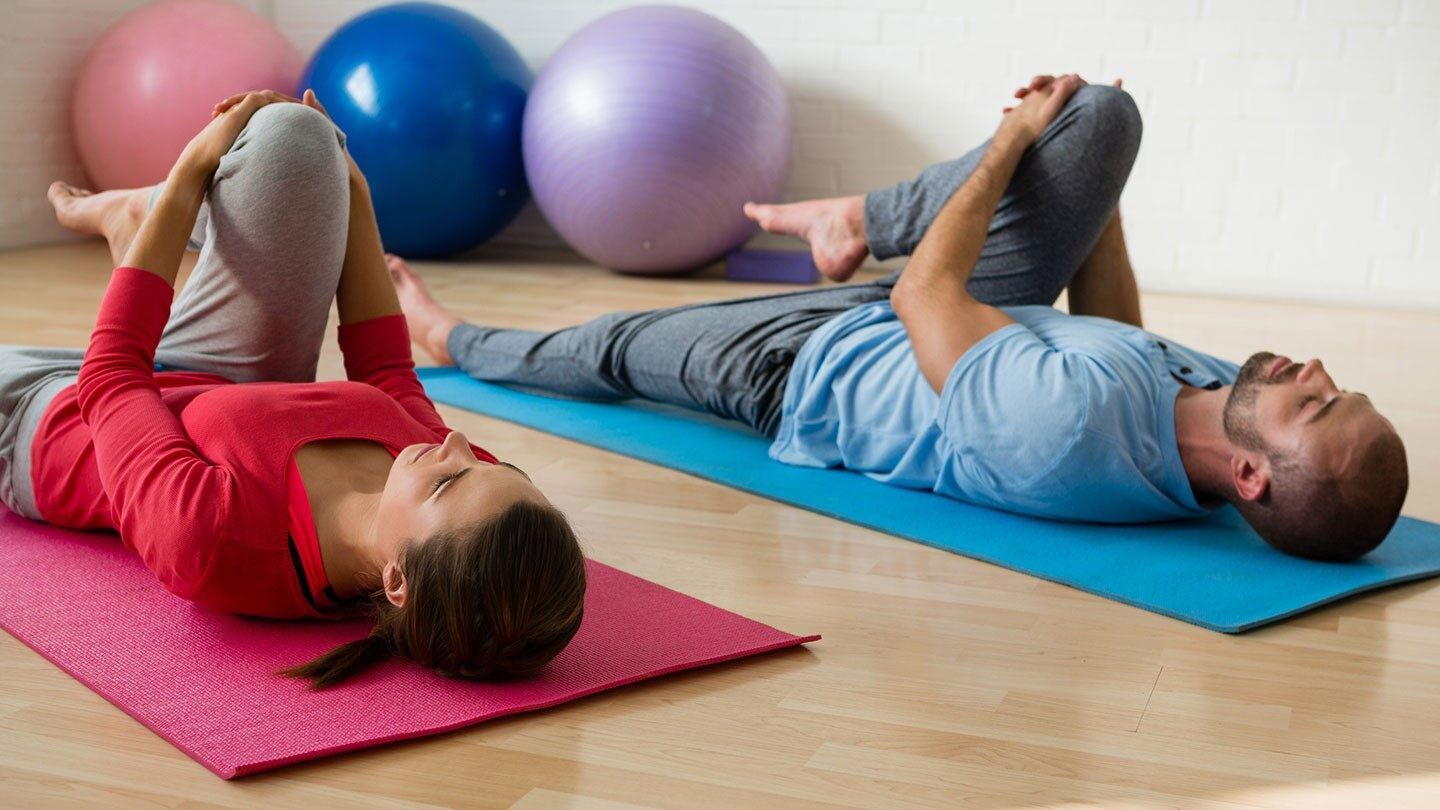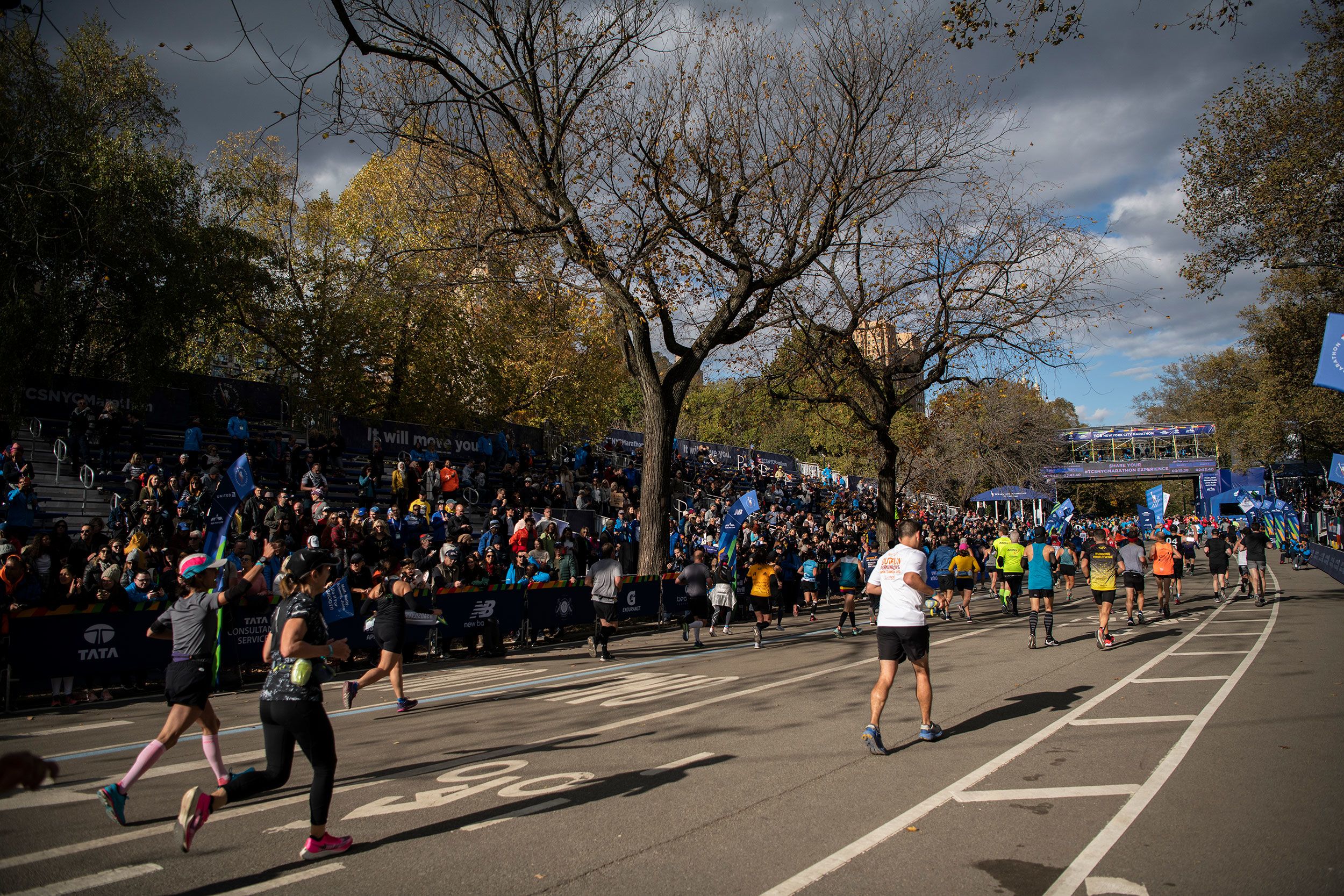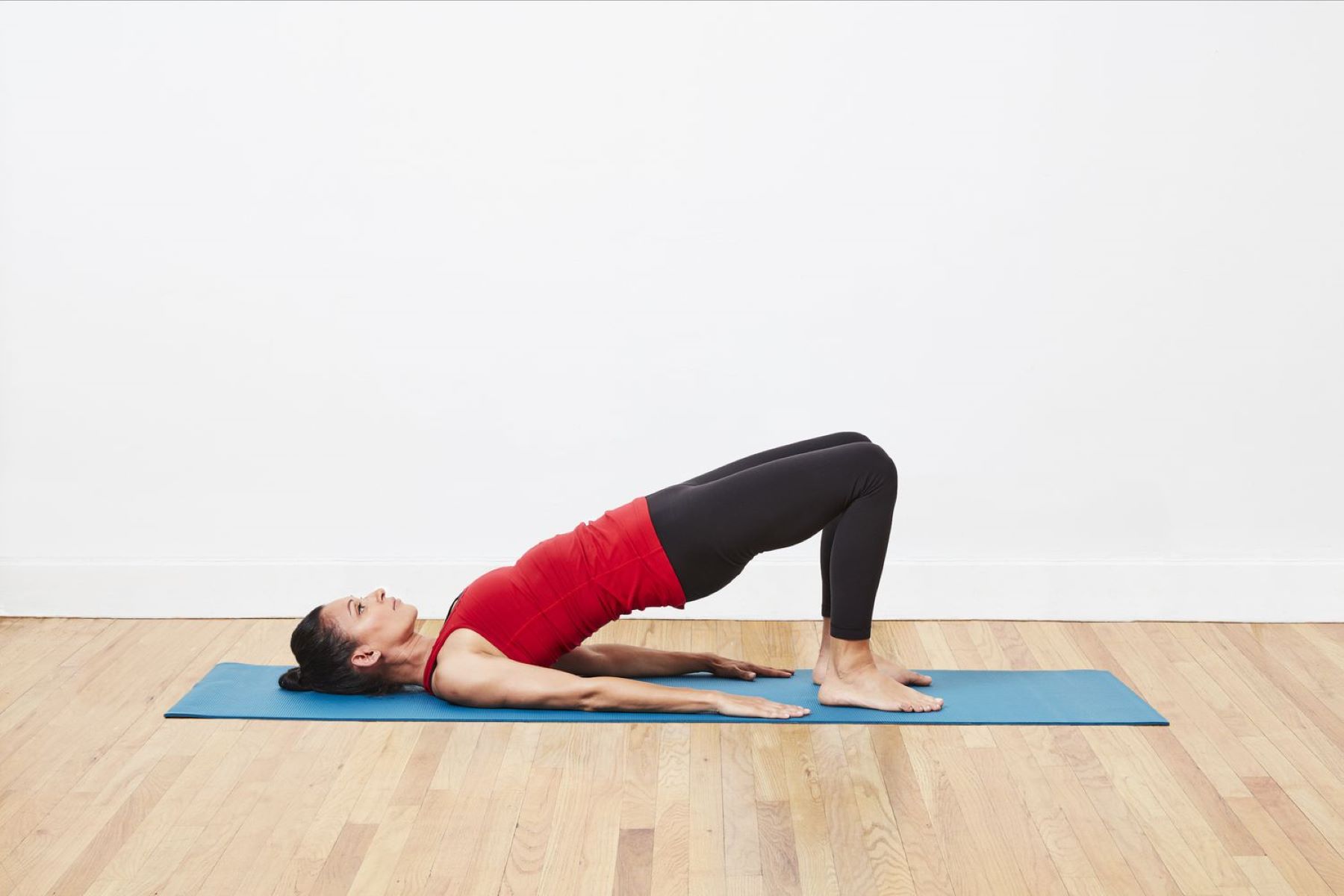

Featured
What Is A Bridge Workout
Modified: January 2, 2024
Learn about the featured bridge workout, its benefits, and how to incorporate it into your fitness routine for a stronger core and improved muscle strength.
Introduction
Welcome to the world of bridge workouts! If you’re ready to take your fitness routine up a notch, then bridge exercises might just be the challenge you’re looking for. Whether you’re a beginner or a seasoned fitness enthusiast, incorporating bridge workouts into your routine can offer a host of benefits for your body and mind.
Named after its resemblance to a bridge, this type of workout targets your core, glutes, and hamstrings while also engaging your upper body and improving overall stability. Bridge exercises involve lifting your hips and creating a straight line from your shoulders to your knees or feet, depending on the variation you’re performing.
Bridge workouts are versatile, allowing you to modify them based on your fitness level and goals. Whether you’re aiming to build strength, improve posture, increase flexibility, or enhance athletic performance, bridge exercises can be tailored to your specific needs.
In this article, we’ll explore the different types of bridge exercises, walk you through the proper technique for a basic bridge, discuss variations, and provide safety tips to help you get the most out of your bridge workouts.
So, get ready to challenge your muscles, improve your overall fitness, and have fun while doing it! Let’s dive into the world of bridge workouts and discover the incredible benefits they can bring to your fitness journey.
Definition of a Bridge Workout
A bridge workout is a type of exercise that focuses on strengthening and engaging the muscles in your core, glutes, and hamstrings. This exercise gets its name from the position your body takes on during the movement, which resembles a bridge.
In a bridge workout, you begin by lying on your back with your knees bent and feet flat on the ground. By engaging your core and glute muscles, you lift your hips off the ground and create a straight line from your shoulders to your knees or feet, depending on the variation you are performing.
The primary goal of a bridge workout is to activate and strengthen the posterior chain muscles, which include the glutes, hamstrings, and lower back. These muscles play a crucial role in maintaining proper posture, stability, and overall athletic performance.
Bridge exercises are highly effective for targeting the glute muscles, which are often underdeveloped and underutilized in sedentary lifestyles. Strengthening the glutes not only improves aesthetic appearance but also helps stabilize the hips, improve lower body mechanics, and alleviate back pain.
Moreover, bridge workouts engage the core muscles, including the rectus abdominis, obliques, and transverse abdominis. Building a strong core can improve overall stability, enhance athletic performance, and prevent injuries.
Bridge workouts can be modified and progressed to suit a variety of fitness levels and goals. From beginners to advanced fitness enthusiasts, everyone can benefit from this versatile exercise. Whether you’re looking to tone your glutes, strengthen your core, or improve your overall fitness, bridge workouts offer an effective and efficient way to achieve your desired results.
Now that we understand the definition and purpose of bridge workouts, let’s delve into the many benefits they have to offer.
Benefits of Bridge Workouts
Bridge workouts offer a range of benefits for both your physical and mental well-being. Let’s explore some of the advantages you can gain from incorporating these exercises into your fitness routine:
- Strengthens the Core: Bridge exercises engage your core muscles, including the rectus abdominis, obliques, and transverse abdominis. By strengthening your core, you improve overall stability and enhance your ability to perform other exercises with proper form.
- Tones and Lifts the Glutes: The primary focus of bridge workouts is activating and strengthening the glute muscles. Regularly performing bridge exercises can help tone and lift your glutes, giving you a more sculpted and defined backside.
- Improves Posture: Weakness in the glutes and core can contribute to poor posture. Bridge workouts target these muscle groups, helping to correct imbalances and improve your overall posture. With better posture, you may experience reduced back pain and an enhanced sense of confidence.
- Increase Lower Body Strength: Bridge exercises target the muscles in your lower body, including the glutes, hamstrings, and quadriceps. By progressively challenging these muscles, you can increase their strength, leading to improved performance in other activities and sports.
- Enhances Athletic Performance: Bridge workouts improve the stability and strength of your lower body, which can have a direct impact on your athletic performance. Whether you’re a runner, a dancer, or a weightlifter, strong glutes and core stability are essential for optimal performance.
- Increases Flexibility: Bridge exercises require a range of motion in the hips and spine, which can help improve flexibility in these areas. Over time, practicing bridge workouts can lead to increased flexibility and mobility, allowing you to perform daily activities with greater ease.
These are just a few of the many benefits you can reap from incorporating bridge workouts into your fitness routine. Whether your goal is to strengthen your core, tone your glutes, improve posture, or enhance athletic performance, bridge exercises offer a versatile and effective way to achieve your fitness goals.
Types of Bridge Exercises
Bridge exercises come in various forms, allowing you to target different muscle groups and add variety to your workouts. Here are some popular types of bridge exercises:
- Basic Bridge: The basic bridge is the foundation of all bridge exercises. It involves lying on your back with knees bent and feet flat on the ground, then lifting your hips off the ground to create a straight line from your shoulders to your knees.
- Single-Leg Bridge: This variation of the bridge exercise is performed by lifting one leg off the ground while maintaining a bridge position with the other leg. This exercise focuses on the glutes and hamstrings while also challenging your balance and stability.
- Elevated Bridge: To perform an elevated bridge, place your feet on an elevated surface such as a bench or step. This increases the range of motion and intensifies the activation of your glutes and hamstrings.
- Bridge Walkout: Start in a bridge position and then slowly walk your feet away from your body, extending your legs. This exercise engages the core and glute muscles as you move in and out of the bridge position.
- Bridge with Leg Lift: In this variation, perform a basic bridge and then extend one leg straight up toward the ceiling, keeping the other foot grounded. This exercise adds an extra challenge to your glutes and hamstrings while also engaging your core.
- Bridge Pulses: From a bridge position, pulse your hips up and down in a controlled manner. This continuous movement targets the glutes and hamstrings, providing a burn that will leave your muscles feeling engaged and challenged.
- Side Bridge: Unlike the traditional bridge, the side bridge focuses on the lateral muscles. Begin by lying on your side and prop yourself up with your forearm and side of your foot. Lift your hips off the ground, creating a straight line from your head to your feet.
These are just a few examples of the many bridge exercises available. Each variation targets specific muscle groups and offers unique benefits. Incorporating a variety of bridge exercises into your routine can help you avoid plateauing and keep your workouts engaging and effective.
How to Perform a Basic Bridge
The basic bridge exercise is a foundational movement that serves as the starting point for many bridge variations. To perform a basic bridge, follow these steps:
- Starting Position: Begin by lying on your back with your knees bent and feet flat on the ground. Your feet should be hip-width apart and your arms relaxed by your sides.
- Engage Your Core: Take a deep breath in and as you exhale, engage your core muscles by drawing your belly button towards your spine. This will help stabilize your body throughout the exercise.
- Lift Your Hips: Press your feet into the ground and slowly lift your hips off the ground. Focus on using your glutes and hamstrings to lift your body, creating a straight line from your shoulders to your knees.
- Squeeze Your Glutes: At the top of the movement, squeeze your glutes tightly. This will maximize the activation of your glute muscles and ensure proper engagement.
- Hold and Lower: Hold the bridge position for a few seconds, then slowly lower your hips back down to the starting position with control.
- Repeat: Perform the exercise for the desired number of repetitions, keeping your form and technique in check throughout the movement.
Remember to maintain a steady breathing pattern throughout the exercise. Inhale as you lower your hips and exhale as you lift your hips, engaging your core muscles. By focusing on your breath and form, you can maximize the benefits of the basic bridge exercise.
As you become more comfortable with the basic bridge, you can progress to more challenging variations that target different muscle groups and add variety to your workouts. Experiment with different bridge exercises to keep your routine exciting and continuously challenge your body.
Variations of Bridge Workouts
Bridge workouts offer a range of variations that can help you target different muscle groups, increase the intensity, and add variety to your fitness routine. Here are some popular variations of bridge exercises:
- Single-Leg Bridge: Lift one leg off the ground while maintaining the bridge position with the other leg. This variation engages the glutes and hamstrings more intensively and enhances balance and stability.
- Elevated Bridge: Place your feet on an elevated surface such as a bench or step to increase the range of motion and intensify the activation of your glutes and hamstrings.
- Bridge Walkout: Perform a basic bridge and slowly walk your feet away from your body, extending your legs. This exercise engages the core and glute muscles as you move in and out of the bridge position.
- Bridge with Leg Lift: After lifting your hips into a bridge, extend one leg straight up toward the ceiling while keeping the other foot grounded. This variation adds an extra challenge to your glutes and hamstrings while engaging your core.
- Bridge Pulses: From a bridge position, pulse your hips up and down in a controlled manner. This continuous movement targets the glutes and hamstrings, providing a burn that will leave your muscles feeling engaged and challenged.
- Side Bridge: Unlike the traditional bridge, the side bridge focuses on the lateral muscles. Begin by lying on your side and prop yourself up with your forearm and side of your foot. Lift your hips off the ground, creating a straight line from your head to your feet.
- Added Resistance: You can increase the intensity of bridge workouts by adding resistance. Try using resistance bands or placing a weight plate or barbell across your hips while performing the exercises.
These are just a few examples of the many variations available for bridge workouts. Each variation targets specific muscle groups and adds a unique challenge to your routine. Experiment with different variations to keep your workouts exciting and continuously challenge your body.
Remember to prioritize proper form and technique when performing bridge variations. Start with the basic bridge and gradually progress to more advanced variations as your strength and stability improve. Always listen to your body and modify exercises as needed to avoid strains or injuries.
Equipment for Bridge Workouts
One of the great things about bridge workouts is that they can be performed with minimal equipment. Here are some pieces of equipment that can enhance your bridge workout experience:
- Exercise Mat: While not essential, an exercise mat provides cushioning and support for your body during bridge exercises. It can help make your workout more comfortable, especially if you’re performing the exercises on a hard surface.
- Resistance Bands: Resistance bands are versatile and affordable tools that can add intensity to your bridge workouts. You can place the band around your thighs or just above your knees to add resistance and activate the glutes and hip muscles to a greater degree.
- Stability Ball: A stability ball, also known as an exercise ball or Swiss ball, can be used to target your core and stability during bridge exercises. Placing your feet on the ball while performing the bridge will challenge your balance and engage more muscles.
- Weight Plates or Barbell: If you’re looking to increase the intensity of your bridge workouts, you can add weight by placing weight plates or a barbell across your hips. This extra resistance can help you build strength and tone your glutes and hamstrings.
- Yoga Block: A yoga block can be used to modify or progress certain bridge exercises. For example, placing a block between your knees or thighs can help engage the inner thigh muscles and increase the challenge of the exercise.
- Step or Bench: If you want to enhance the range of motion in your bridge exercises, you can use a step or bench to elevate your feet. This allows for a greater stretch and activation in your glutes and hamstrings.
Remember that while equipment can enhance your bridge workouts, it is not necessary to perform them effectively. You can still reap the benefits of bridge exercises using just your body weight. The equipment mentioned above can simply add variety and intensity to your workouts.
When incorporating equipment into your bridge workouts, ensure that you are using it safely and with proper form. Follow any manufacturer instructions and guidelines to avoid injury. Start with lighter weights or resistance bands and gradually increase the intensity as you become more comfortable and confident in your form and stability.
Ultimately, the most important thing is to listen to your body and choose equipment that suits your fitness level and goals. Whether you’re using equipment or not, bridge workouts can be an effective way to strengthen your core, tone your glutes, and improve overall stability.
Safety Tips for Bridge Workouts
While bridge workouts are generally safe and beneficial, it’s important to prioritize safety and proper form to prevent injuries and get the most out of your workouts. Here are some safety tips to keep in mind:
- Warm Up: Before starting any exercise, including bridge workouts, it’s vital to warm up your body. Perform dynamic stretches and movements to increase blood flow, warm up your muscles, and prepare your body for the workout ahead.
- Maintain Proper Form: Pay close attention to your form throughout the exercise. Ensure that your shoulders, hips, and knees are aligned and that you’re creating a straight line from your shoulders to your knees or feet. Engage your core and glutes while performing the movement.
- Start with Proper Progression: If you’re new to bridge workouts, begin with the basic bridge before progressing to more advanced variations. This allows your body to adapt to the movement and build foundational strength before adding more complexity.
- Listen to Your Body: It’s essential to listen to your body and avoid pushing yourself too hard. While it’s normal to feel some muscle fatigue and discomfort during a workout, sharp or severe pain is a sign to stop and seek medical attention if necessary.
- Use Proper Breathing Techniques: Remember to breathe throughout the exercise. Inhale as you lower your hips and exhale as you lift your hips, engaging your core muscles. Proper breathing techniques help stabilize your body and increase the effectiveness of the workout.
- Modify Exercises as Needed: If you have any pre-existing conditions or injuries, make modifications to the exercises as necessary. For example, if you have knee issues, placing a folded towel or cushion under your knees can provide extra support and decrease discomfort.
- Gradually Increase Intensity: Just like with any exercise, gradually increase the intensity of your bridge workouts over time. This allows your muscles to adapt and minimizes the risk of strain or injury. Progress by adding more repetitions, introducing variations, or increasing resistance.
- Stay Hydrated: Remember to stay hydrated by drinking water before, during, and after your workouts. Proper hydration is important for overall safety and performance.
- Consult a Professional: If you’re unsure about proper form or have specific concerns or limitations, it’s advisable to consult a fitness professional or physical therapist who can guide you in performing bridge exercises correctly and safely.
By following these safety tips, you can minimize the risk of injury and maximize the benefits of your bridge workouts. Remember, it’s always better to prioritize safety over pushing yourself too hard. With proper form, progression, and listening to your body, you can enjoy a safe and effective bridge workout routine.
Precautions and Modifications
While bridge workouts are generally safe for most individuals, there are certain precautions and modifications to keep in mind. Here are some considerations to ensure your safety and well-being during your bridge exercise routine:
- Existing Injuries or Conditions: If you have any pre-existing injuries or conditions, such as lower back pain, knee issues, or pelvic floor dysfunction, it’s important to consult with a healthcare professional before performing bridge exercises. They can provide specific guidance and modifications tailored to your needs.
- Pelvic Floor Dysfunction: Individuals with pelvic floor dysfunction, such as pelvic organ prolapse or urinary incontinence, should exercise caution when performing bridge exercises. Modifying the exercise by reducing the range of motion or avoiding excessive squeezing of the glutes can help prevent further strain on the pelvic floor muscles.
- Pregnancy: Pregnant individuals should consult with their healthcare provider before engaging in bridge workouts. Depending on the stage of pregnancy and individual circumstances, modifications may be necessary to ensure the safety of both the mother and the baby. For example, using a stability ball or reducing the range of motion can provide additional support.
- Proper Breathing: It’s important to maintain proper breathing techniques during bridge exercises. Avoid holding your breath, as this can increase pressure in the core and pelvic floor muscles. Instead, focus on exhaling as you lift your hips and inhaling as you lower them, engaging your core muscles and maintaining proper form.
- Overexertion: Pushing yourself too hard or overexerting during bridge exercises can increase the risk of injury. It’s important to listen to your body and avoid excessive strain. Gradually increase the intensity and difficulty of your workouts over time to allow your muscles to adapt and strengthen progressively.
- Inadequate Recovery: Adequate rest and recovery are crucial for injury prevention and muscle growth. Give yourself enough time between bridge workouts to allow your muscles to recover and repair. This can help prevent overuse injuries and promote optimal performance.
- Individual Fitness Level: Everyone has different fitness levels and capabilities. It’s important to modify the exercises accordingly. Start with the basic bridge and progress at a pace that is comfortable for you. If an exercise feels too challenging, modify it or reduce the repetitions until you build the necessary strength and stability.
- Proper Form: Maintaining proper form is essential for preventing injuries and maximizing the effectiveness of bridge exercises. Focus on alignment, engaging the appropriate muscles, and avoid compensating with other muscle groups. If you’re unsure about proper form, consider working with a fitness professional who can provide guidance and ensure you’re performing the exercises correctly.
Remember, your safety and well-being should always be a top priority when engaging in any form of exercise. By taking precautions, modifying exercises as needed, and listening to your body, you can minimize the risk of injury and enjoy the numerous benefits that bridge workouts offer.
Conclusion
Bridge workouts are an excellent way to strengthen your core, tone your glutes, and improve overall stability. These exercises offer a wide range of variations, allowing you to target specific muscle groups and add variety to your fitness routine. Whether you’re a beginner or an experienced fitness enthusiast, bridge workouts can be modified to suit your fitness level and goals.
By performing bridge exercises such as the basic bridge, single-leg bridge, elevated bridge, and more, you can experience a multitude of benefits. These include strengthening your core muscles, toning and lifting your glutes, improving posture, increasing lower body strength, enhancing athletic performance, and increasing flexibility.
When incorporating bridge workouts into your routine, it’s essential to prioritize safety and proper form. Warm up before exercising, maintain proper alignment and breathing techniques, listen to your body, and gradually increase the intensity of your workouts. If you have any pre-existing injuries, conditions, or concerns, consult with a healthcare professional or fitness expert for personalized advice and modifications.
Remember, bridge workouts can be performed with minimal equipment, such as an exercise mat, resistance bands, stability ball, or weight plates. However, equipment is not necessary to reap the benefits of bridge exercises; your body weight alone can provide an effective workout.
Overall, bridge workouts offer a challenging and effective way to strengthen your muscles, improve your posture, and enhance your overall fitness. With consistency, proper technique, and a progressive approach, you can incorporate bridge exercises into your fitness routine and enjoy the numerous benefits they bring. So, get ready to bridge your way to a stronger, fitter, and more balanced body!
